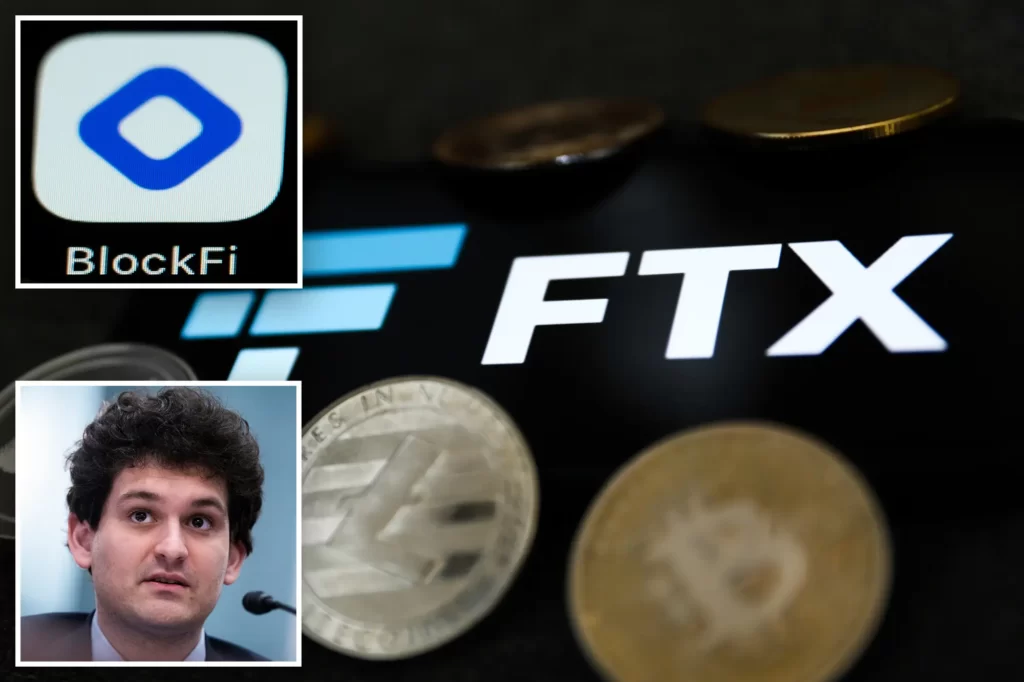- In 2017, Flori Marquez and Zac Prince founded BlockFi in Jersey City to expand the crypto ecosystem by reinventing and reimagining the banking system.
- On the 28th of November 2022, BlockFi officially filed for bankruptcy protection and sued Sam Bankman-Fried’s Emergent Fidelity Technologies on the same day.
- During the court filing, BlockFi confessed it owed money to more than 100,000 creditors having FTX among that list.
As we draw near the end of the month, the crypto world has experienced a rough few weeks. With the FTX crash, the problems keep on coming. However, Binance has promised to contribute $1 billion to salvage the crypto ecosystem it still needs to be more. The sheer influence and significance FTX held is now evident to most crypto traders. The crypto crash has affected those who did not associate with FTX. In the end, FTX played a significant role in the crypto ecosystem, and no industry has felt its effect more than BlockFi, a crypto exchange platform. BlockFi has recently been declared bankrupt and is now seeking justice against SBF for being a catalyst to its downfall.
Brief Background BlockFi
In 2017, Flori Marquez and Zac Prince founded BlockFi in Jersey City to expand the crypto ecosystem by reinventing and reimagining the banking system. Essentially it was trying to offer various banking services to unbanked communities and hence can be termed a cryptocurrency lender. Their central demography at their initial start was ordinary investors eager for a piece of crypto cake that, at the time, was at its high phase.
The crypto exchange platform offered small loans to crypto traders and investors within minutes without credit checks. In addition, they also showed high-interest rates to loyal crypto traders within their forum. These services essentially marketed themselves as all users started signing in. Its easy mechanism and fee-free trading made it all the more luring, and in addition, each transaction had a small fee which was the final hook.
Also, Read FTX trading LTD finally hits rock bottom
BlockFi offered several cryptocurrencies in which users would. The included bitcoin, Ethereum, litecoin, pax gold, and several stablecoins such as; US dollar stablecoin (USDC), tether (USDT), Gemini dollar (GUSD), and Paxos Standard (PAX).
Although BockFi was a crypto exchange platform, it was essentially known for its crypto-based laws.

Over the years, BlockFi has offered several services to expand its reach and market gap. It currently provides services for investment funds, market makers, businesses and other institutional clients. They generally include financing (loans in cryptocurrencies, stablecoins, and US dollars), over-the-counter (OTC) trading with 24/7 support and corporate treasury solutions.
Crumbling Link between FTX and BlockFi
BlockFI did not have a well of year in 2022; the crypto exchange platform needed help keeping afloat due to heightened crypto volatility at the beginning of the month. Seeking refuge and stability, BlockFi struck a deal with FTX long before the crypto crash in June.
This was a safety net for the crypto exchange platform and all of its crypto traders, and FTX’s reputation and credibility greatly influenced this decision. At the time, FTX agreed to aid its fellow platform and was credited with $400 million, a loan BlockFi accessed.
It subsequently borrowed $275 million from a subsidiary of FTX, which brought plenty of issues. At the time, BlockFi genuinely did not expect FTX to cause a crypto crash.
BlockFi files for Bankruptcy and Sues SBF
On the 28th of November 2022, BlockFi officially filed for bankruptcy protection and sued Sam Bankman-Fried’s Emergent Fidelity Technologies on the same day. The crypto crash caused by FTX caused severe damages causing the crypto exchange to halt most of its operations.
Zac and Flori have opted to seek court protection to buy them time to restructure and settle their debts and recover lost money for its crypto traders. During the court filing, BlockFi confessed it owed money to more than 100,000 creditors having FTX among that list.
Also, Read the steps you need to take to become a blockchain developer.
Mark Renzi of Berkeley Research Group, BlockFi’s financial advisor, had few positive words to say about the crypto exchange platform.”From its inception, BlockFi has worked to shape the cryptocurrency industry and advance the sector positively. BlockFi looks forward to a transparent process that achieves the best outcome for all clients and other stakeholders.”
This new debacle from BlockFi has added to FTX’s existing problems but has not responded to any of the allegations. According to BlockFi, SBF bought several RobinHood(HOOD) shares held by the company and pledged to BlockFi as collateral.
John J Ray, the new chief executive of FTC who previously led Enron during its bankruptcy, has called FTX dysfunction.
Conclusion
The crypto crash was caused by FTX and its ripple effect throughout the crypto ecosystem. Although this has not deterred crypto trades globally, it will take some time. BlockFi is among many crypto exchanges to suffer these foreseen circumstances.
